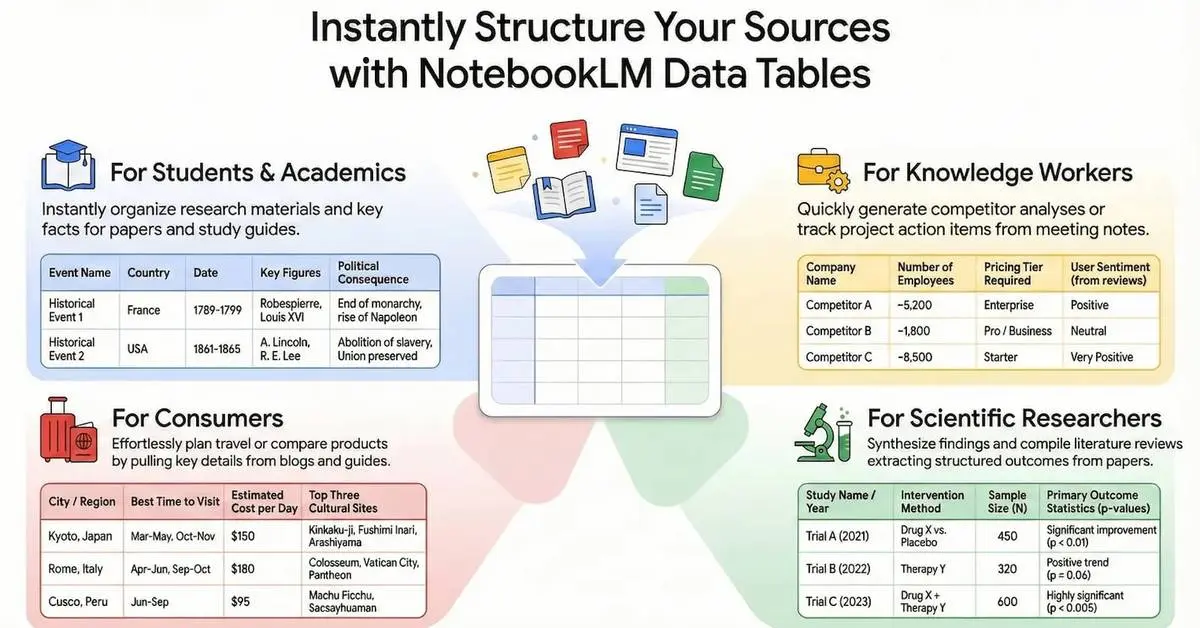ASML's Market Position Remains Strong Despite Recent Challenges
2 Sources
2 Sources
[1]
ASML: No Real Reasons For Bulls To Panic (NASDAQ:ASML)
Looking for a helping hand in the market? Members of Ultimate Growth Investing get exclusive ideas and guidance to navigate any climate. Learn More " ASML: Brutal Bear Market, But Don't Fear ASML Holding (NASDAQ:ASML) investors have endured a brutal summer, as ASML stock topped out in early July 2024 before collapsing over 30% through its August lows. However, robust dip-buying sentiment has been assessed above the $750 level as investors bet on a turnaround in the stock. In my bullish ASML article in June 2024, I updated that its breakout rally seemed imminent. While the breakout arrived, it quickly fizzled out as semiconductor investors considered the sustainability of the AI upcycle. In addition, the unwinding of the yen carry trade in early August intensified the pain of ASML's outward rotation. Notwithstanding its recent recovery, the stock remains almost 20% below its July highs, suggesting a significant level of caution is still observed. With the S&P 500 (SP500) closing in against its all-time highs, is the rally for ASML over as investors reassess Nvidia's (NVDA) upcoming earnings release this week? There's no doubt that Nvidia's earnings will be closely scrutinized to ascertain whether AI infrastructure stocks can continue their spectacular run. ASML Rides The AI Infrastructure Tailwinds As the provider of EUV lithography machines, ASML has a stranglehold over the supply of AI chipmaking equipment for leading-edge foundries like TSMC (TSM). Samsung (OTCPK:SSNLF) and Intel (INTC) have also attempted to catch up with the Taiwanese foundry leader, which should spur an EUV arms race as we transition into the High NA era. As a reminder, ASML emphasized that "High NA will enable an almost three-time increase in transistor density relative to the Low NA system." In addition, the ASP for its High NA systems cost "north of EUR350M" each. Consequently, I assess significant potential for the EUV leader to benefit from the AI arms race as hyperscalers and big tech invest more aggressively to maintain their leadership edge. Based on recent big tech earnings, it has become increasingly clear that big tech views AI as a fundamental underpinning to its growth strategy. It also views it through a long-term lens, expressing confidence in the potentially lasting impact of investing ahead of the curve or risking falling behind its peers. Therefore, I believe ASML is well-positioned to capitalize on the underlying AI growth drivers, benefiting its key foundry customers. Given the announced reduction in CapEx investments, Intel's foundry roadmap could be affected. Therefore, some investors could be concerned whether Intel's delay/reductions could affect the ramp-up of its foundry investments, potentially slowing the revenue conversion for ASML. Accordingly, ASML expects 2024 to be a "transition" year, as it expects to achieve a midpoint revenue of between EUR30B and EUR40B in 2025. In addition, the company has continued to record strong bookings, resulting in a total backlog of EUR39B in Q2. As a result, I believe it provides substantial clarity into the company's 2025 revenue conversion prospects, potentially lowering the execution risks. In addition, the ramp-up in AI memory demand through HBM memory solutions is also expected to provide further tailwinds for ASML. As Samsung and Micron (MU) compete against SK Hynix in the HBM space, it should spur another race to become Nvidia's preferred HBM supplier. Therefore, I assess that ASML's ability to capitalize on the AI logic and memory growth drivers should mitigate the transition risks as its customers move toward High NA models subsequently. ASML Anticipates 2025 To Be Solid As seen above, ASML's revenue growth is expected to see an inflection from 2025, aligned with management's confident commentary and outlook. The robust downstream demand from the hyperscalers and big tech has afforded more clarity to ASML's projections. While a normalization could occur from 2026, a potentially more aggressive AI investment cadence could help mitigate some of the assessed growth normalization impact. Furthermore, AI factories could be the next growth vector not encapsulated in the current forecasts as enterprise customers and smaller data centers broaden their AI adoption. However, ASML is still susceptible to US export restrictions on chips, which could hobble its sales to Chinese customers. Despite that, the recent announcement that ASML could be exempt from more harsh restrictions has helped ease investor concerns. Notably, China sales have lifted ASML's prospects, accounting for 49% of net system sales in Q2. China is assessed to be stockpiling chip equipment in anticipation of more draconian rules as a new administration takes over from the outgoing Biden administration in early 2025. Therefore, I assess that unless the market anticipates a significant deterioration in China-related sales due to more draconian restrictions, China is still expected to be a tailwind for ASML. Is ASML Stock A Buy, Sell, Or Hold? ASML fell into a bear market over the past month but saw robust buying support above the $750 level as buyers returned aggressively. ASML's "B" momentum grade corroborates my conviction, although the selling intensity took some shine off its previous rally. However, ASML's forward adjusted PEG ratio of 1.9 is aligned with its sector median of 1.92. It's also broadly consistent with its 5Y average of 1.83, suggesting the stock doesn't seem to be overvalued, considering its fundamentally strong thesis. The stock's "A+" profitability grade underpins my bullish proposition. I suggest investors consider joining the dip-buyers in early August and betting on a further rally in the stock. Risks To ASML's Bullish Thesis ASML is still priced for growth, as seen with its "A-" growth grade. Therefore, a marked slowdown in AI infrastructure investments could have an outsized impact on its forward bookings, resulting in a worse-than-anticipated deceleration in revenue growth. China remains a significant geopolitical headwind, potentially facing more uncertainties as a new administration assumes power in early 2025. While ASML's leading-edge equipment sales should help mitigate a slowdown in the Chinese market, it could also lead to a valuation de-rating in ASML. Rating: Maintain Buy. Important note: Investors are reminded to do their due diligence and not rely on the information provided as financial advice. Consider this article as supplementing your required research. Please always apply independent thinking. Note that the rating is not intended to time a specific entry/exit at the point of writing unless otherwise specified. I Want To Hear From You Have constructive commentary to improve our thesis? Spotted a critical gap in our view? Saw something important that we didn't? Agree or disagree? Comment below with the aim of helping everyone in the community to learn better! Editor's Note: This article discusses one or more securities that do not trade on a major U.S. exchange. Please be aware of the risks associated with these stocks. A Unique Price Action-based Growth Investing Service We believe price action is a leading indicator. We called the TSLA top in late 2021.We then picked TSLA's bottom in December 2022.We updated members that the NASDAQ had long-term bearish price action signals in November 2021.We told members that the S&P 500 likely bottomed in October 2022.Members navigated the turning points of the market confidently in our service.Members tuned out the noise in the financial media and focused on what really matters: Price Action. Sign up now for a Risk-Free 14-Day free trial! JR Research is an opportunistic investor. He was recognized by TipRanks as a Top Analyst. He was also recognized by Seeking Alpha as a "Top Analyst To Follow" for Technology, Software, and Internet, as well as for Growth and GARP. He identifies attractive risk/reward opportunities supported by robust price action to potentially generate alpha well above the S&P 500. He has also demonstrated outperformance with his picks. He focuses on identifying growth investing opportunities that present the most attractive risk/reward upside potential. His approach combines sharp price action analysis with fundamentals investing. He tends to avoid overhyped and overvalued stocks while capitalizing on battered stocks with significant upside recovery possibilities. He runs the investing group Ultimate Growth Investing which specializes in identifying high-potential opportunities across various sectors. He focuses on ideas that has strong growth potential and well-beaten contrarian plays, with an 18 to 24 month outlook for the thesis to play out. The group is designed for investors seeking to capitalize on growth stocks with robust fundamentals, buying momentum, and turnaround plays at highly attractive valuations. Learn more Analyst's Disclosure: I/we have a beneficial long position in the shares of ASML, TSM, NVDA either through stock ownership, options, or other derivatives. I wrote this article myself, and it expresses my own opinions. I am not receiving compensation for it (other than from Seeking Alpha). I have no business relationship with any company whose stock is mentioned in this article. Seeking Alpha's Disclosure: Past performance is no guarantee of future results. No recommendation or advice is being given as to whether any investment is suitable for a particular investor. Any views or opinions expressed above may not reflect those of Seeking Alpha as a whole. Seeking Alpha is not a licensed securities dealer, broker or US investment adviser or investment bank. Our analysts are third party authors that include both professional investors and individual investors who may not be licensed or certified by any institute or regulatory body.
[2]
ASML Holding: Priced For Growth We Can't Assume (NASDAQ:ASML)
Thus, while history points to significant revenue and free cash flow growth, concerns around the valuation makes ASML a Hold. ASML Holding (NASDAQ:ASML) is a global leader in lithography for wafer production, part of the process of manufacturing semiconductors. Over the past decade, this position has delivered wonderful returns to investors. With dividends reinvested, ASML significantly outperformed the broader market. The question, then, is if long-term investors could reasonably expect to be rewarded further if they started a position today. Even doing half as well would be a great return on investment. My concern is largely on the valuation for such a business, and I'll go into why that makes the shares a Hold for now. Financial History First, let's look at how the improvements of their financial results over time contributed to these shareholder returns. Annual revenues are roughly five times where they were a decade ago, a significant level of real growth. This led to improvements in free cash flow, with more recent years being much higher than before. Fluctuations in annual FCF have had largely to do with when accounts receivable are eventually converted into cash payments between years. As an average over the last five years, ASML's annual FCF has been about €5.3 billion. These gains resulted in rising dividend distributions to shareholders, as well as regular buybacks, fluctuating depending on the year, typically peaking when FCF is higher that year. 2021 showed their largest peak to date. As their financials are reported in euros, that year would have been similar to buying backing back shares of ASML for about $715 per share throughout 2021, based on exchange rates between the euro and the dollar at the time. (See their 2021 annual report, pg. 137, for figures on the repurchases.) Overall, even though the semiconductor industry is known to be cyclical, ASML has been a grower and a compounder throughout the last decade of its life, both as a business and as the shares themselves are concerned. Business Model As I mentioned before, ASML's role in semiconductor development are its lithographic machines that enable customers' production of wafers. While their top three customers have historically been Intel (INTC) in the United States, Samsung (OTCPK:SSNLF) in Korea, and TSMC (TSM) in Taiwan, more recently they have reported the largest share of their net sales, across their different product lines, going to customers in China. These sales account not just for the wafers themselves but various support and software services to assist in their use. They make possible a variety of end uses, such as smartphones, personal computing, automobiles and data centers. Each of these has their own mini-cycles within the broader semiconductor cycle, and ASML historically has been able to adjust and serve customer needs, whatever the end use. Future Outlook With the history and business summarized, I want to go over the key advantages and risks that informs this thesis. China As about half of net sales currently go to customers in China, there is some risk of doing business with this country. The US government has been increasing pressure to reduce China's access to the most advanced semiconductor technology. Similarly, some fear that China may preemptively develop its own domestic industry, as it currently lacks this in any meaningful capacity. Management expressed less concern about this in its Q2 2024 earnings call. In this case, China. We look at -- and that's the way we model our sales medium term and long term. We look at what is the global demand for wafers and whether those wafers are being produced in country X or country Y, at the end of the day, it doesn't matter. And I think that is very important to recognize in looking at your model. We don't have a specific China element in our models. It is the global demand for wafers that drives our modeling. For my part, I think the history of the company bears this out. Seen above, China has only somewhat recently become a major source of business for the company. Sales have continued to grow in other regions as well, and as more of the world develops and integrates technology into their lives, I expect their projections for medium-to-long term demand will prove to be a reliable model for them. As we saw recently in July, fears over this can result in dips of the share price, but ideally folks who invest in ASML are in it for the long haul anyway. AI Boom I expect one of the big drivers of demand to be the boom around AI. This is somewhat indicated by the growing end use data centers that I showed earlier. Management attested to this as well in the earnings call: So I think AI is driving, I would say, right now, the biggest part of the recovery. This is true for Logic. This is true for Memory. Roger just commented on Logic. I think you know that for high bandwidth memory, those products drive more demand, more wafer demand, because we are looking basically at a higher density of DRAM on those products and we look at something that, of course, will take course over several months. So we started to see the positive effect of that for 2025. We expect that to continue into 2026, both for Memory and for Logic. The near-term outlook is therefore favorable for ASML's results. We have yet to know what a long-term trend even looks like for AI-driven demand, and so I am not sure if we can assume it will be a source of sustainable growth for as long as a decade, but that does seem to be the case for the next few years, at the very least. Multiple Expansion While the fundamentals of ASML did improve quite a bit over the past decade, a major part of those total returns has been multiple expansion. Whether one prefers to reference the Price/Earnings or Price/Cash Flow ratios, both traded much lower before and currently at multiples two-to-three times higher than a decade prior. While even a flat multiple would have created gains on these improving fundamentals, ASML is now a much bigger company priced for a higher rate of growth. The multiples have even been in the single digits when the market has felt less optimistic, even given a few years after the 2008 Financial Crisis. Lacking a major recession since then, I think it's good to keep that in mind for pricing ASML today. Returns to Shareholders One upside has been the company's constant commitment of distributing growing dividends to shareholders each year. With its growth prospects and very small amount of debt on its balance sheet, I expect it will have the cash flow to sustain these distributions. The buybacks are more of a wild card. The company has shown an appetite for its shares, typically exceeding the cash committed to dividend distributions. While 2023's repurchases were less, 2024 so far has shown an increased pace of buybacks, even as shares trade near all-time highs. Remember also that buybacks surged in 2021, when the multiples were also in a higher range. While I believe their dividend policy will be beneficial to shareholders over time, I think their buyback policy suggests they may get poor returns on capital for the prices they accept on the market. Valuation With these matters laid out, I'm going to provide a valuation based on a Discounted Cash Flow model. I'll use the following assumptions: €5.3B as baseline FCF 15% CAGR for the first 5 years 10% CAGR for the second 5 Terminal multiple of 15 As I mentioned before, €5.3B is average of the last five years, and I think it accurately reflects what is minimally possible of their ability to generate cash. Considering their history of consistent revenue growth and strong gross margins, I think a CAGR of at least 15% is possible over the next few years, but I suspect this could decline if there are issues related to China or declines in demand if AI drivers should stabilize over time or a recession should occur. Similarly, a terminal multiple of 15 represents a lower range of how the market could price this, especially if they grow pessimistic compared to today. Priced with a 10% discount rate (typical return of a broad market index) and converted into USD based on current exchange rates, that suggests intrinsic value of ASML is about $182B, resolving to about $463 per share. Based on that, I think the current valuation on the market doesn't provide enough margin of safety for less-than-stellar earnings results. Conclusion ASML is a solid company with a continually improving fundamentals and a central role in global production of lithographic machines, whose function is essential to production of semiconductors. I don't think there are long-term risks of being wiped out, as a sophisticated product at scale has barriers to entry for potential competitors. That said, there are still forces that can affect demand that ASML does not control. On top of that, the business currently priced for a bright future but not for a dimmer rates of earnings growth. Investors of the past not only were able to ride the growth of ASML; they were able to do so at a multiple that offered a greater margin of safety, and the current buybacks at these higher multiples may drag further on long-term returns. Considering all of this, I think a lower entry price is needed, and the shares are best considered a Hold for now. My articles are written with a mind to owning a stock for years, not trying to predict price movements in a few months. I don't do target prices; I do valuations.I first entered investing in 2020 as an individual value investor, keen to understand the fundamentals of businesses and buy their shares at attractive prices. From May 2022 to May 2023, I worked as an investment advisory representative at Fidelity Investments. I am now self-employed through other ventures.Part of my technique is to write an article as though it is a letter to my future self. I look at it as a chance for my ideas to improve and grow as I follow each company. As such, I tend to start from a place of caution. I used to write many Sell pieces. As of March 2024, I stopped doing that, and I simplified my approach to "Buy or Don't Buy." Many of my articles will either be Buy or Hold going forward. I have yet to issue a Strong Buy rating to any security. Analyst's Disclosure: I/we have no stock, option or similar derivative position in any of the companies mentioned, and no plans to initiate any such positions within the next 72 hours. I wrote this article myself, and it expresses my own opinions. I am not receiving compensation for it (other than from Seeking Alpha). I have no business relationship with any company whose stock is mentioned in this article. Seeking Alpha's Disclosure: Past performance is no guarantee of future results. No recommendation or advice is being given as to whether any investment is suitable for a particular investor. Any views or opinions expressed above may not reflect those of Seeking Alpha as a whole. Seeking Alpha is not a licensed securities dealer, broker or US investment adviser or investment bank. Our analysts are third party authors that include both professional investors and individual investors who may not be licensed or certified by any institute or regulatory body.
Share
Share
Copy Link
ASML, a key player in the semiconductor industry, faces short-term headwinds but maintains a strong long-term outlook. Recent stock price fluctuations and market concerns are analyzed in light of the company's technological dominance and future growth prospects.

ASML's Recent Stock Performance and Market Concerns
ASML Holding N.V., a Dutch multinational company and a key player in the semiconductor industry, has recently experienced some turbulence in its stock price. The company's shares have seen a decline, dropping from their 52-week high of €747.50 to €615.40 as of the latest market close
1
. This 17.7% decrease has raised concerns among investors and market analysts about the company's short-term prospects.Technological Dominance and Market Position
Despite the recent stock price fluctuations, ASML maintains a strong position in the semiconductor industry. The company is renowned for its extreme ultraviolet (EUV) lithography machines, which are crucial for manufacturing advanced semiconductor chips. ASML's near-monopoly in this technology gives it a significant competitive advantage
2
.The company's technological edge is further reinforced by its continuous innovation in high-NA EUV technology, which is expected to be a key driver of future growth in the semiconductor industry
1
. This positions ASML well for long-term success, despite short-term market concerns.Short-Term Challenges and Industry Cyclicality
The semiconductor industry is known for its cyclical nature, and ASML is not immune to these fluctuations. Recent concerns about the company's performance are partly attributed to the current downcycle in the semiconductor market
2
. Additionally, geopolitical tensions and export restrictions, particularly those imposed by the United States on China, have created uncertainty in the market1
.However, it's important to note that these challenges are likely to be temporary. The semiconductor industry has historically shown resilience and ability to recover from downturns, often emerging stronger due to increased demand for advanced technologies.
Related Stories
Financial Performance and Future Outlook
Despite the recent stock price decline, ASML's financial fundamentals remain strong. The company has maintained a robust balance sheet and continues to invest in research and development to stay ahead of the technological curve
1
. While short-term revenue growth may be impacted by the current market conditions, the long-term outlook for ASML remains positive.Analysts project that ASML's earnings per share (EPS) could potentially reach €40 by 2025, indicating strong growth prospects
2
. However, investors should be cautious about assuming this growth is guaranteed, given the inherent uncertainties in the semiconductor market.Market Valuation and Investor Considerations
ASML's current market valuation reflects high growth expectations. The company's price-to-earnings (P/E) ratio, while lower than its recent peak, still indicates that the market is pricing in significant future growth
2
. This valuation leaves little room for error and assumes that ASML will continue to dominate its market segment.Investors should carefully consider the balance between ASML's strong market position and technological advantages against the current high valuation and potential short-term headwinds. While the company's long-term prospects appear solid, short-term volatility may persist due to market cycles and geopolitical factors.
References
Summarized by
Navi
[1]
[2]
Related Stories
Recent Highlights
1
Google launches Gemini 3 Flash as default AI model, delivering speed with Pro-grade reasoning
Technology

2
OpenAI launches GPT Image 1.5 as AI image generator war with Google intensifies
Technology

3
OpenAI launches ChatGPT app store, opening doors for third-party developers to build AI-powered apps
Technology








